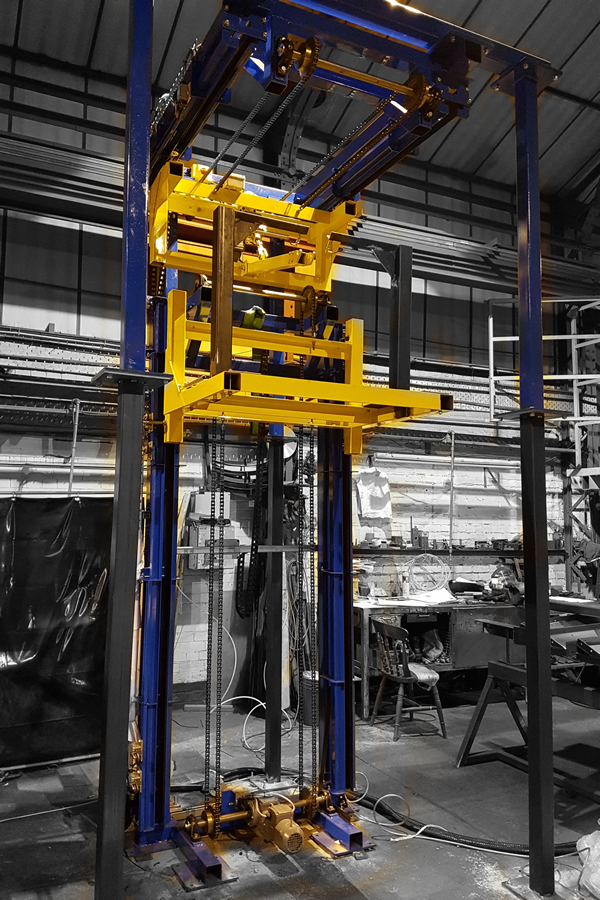Leading Lift Companies in London: Providing Exceptional Service and Support
Leading Lift Companies in London: Providing Exceptional Service and Support
Blog Article
Exploring the Globe of Lifts: Typical Problems Faced by Numerous Lift Systems
As we navigate through the upright transportation systems of contemporary structures, lifts stand apart as a vital element of our daily lives. Nonetheless, behind their seamless procedure exists a world of detailed systems that can sometimes run into difficulties. From hydraulic lifts to traction systems and machine-room-less designs, each lift kind comes with its collection of common problems. Understanding these obstacles is important for ensuring the smooth functioning of these vital systems. Let's discover the complexities that underlie the procedure of elevators and the possible issues that can develop, shedding light on the detailed web of lift devices.
Hydraulic Lifts
Hydraulic lifts, frequently favored for low-rise buildings, utilize fluid stress to regulate the movement of the elevator cars and truck (lift repair companies). This device involves a hydraulic pump pushing oil right into a cyndrical tube, causing the elevator to relocate in the wanted instructions. While hydraulic elevators are known for their smooth and peaceful operation, they do come with their very own set of usual concerns
One widespread trouble with hydraulic lifts is oil leak. In addition, concerns with the control system, such as damaged shutoffs or a malfunctioning pump, can create disturbances in the lift's motion.
Routine maintenance and prompt repair work are vital to make sure the smooth functioning of hydraulic elevators. By dealing with these common concerns proactively, structure proprietors can reduce downtime and guarantee the safety and efficiency of their upright transport system.
Grip Elevators
When considering vertical transport systems in structures, one more common kind apart from hydraulic lifts is the traction elevator. Traction lifts run making use of a system of ropes and weights that relocate the lift automobile by clutching onto the hoist ropes. This device permits smoother and quicker vertical transportation contrasted to hydraulic systems.
Among the typical problems faced by grip lifts is rope wear. The constant movement of the ropes within the grip system can result in tear and put on gradually, potentially causing the lift to malfunction or become harmful for usage. Routine evaluations and upkeep of the ropes are important to make sure the lift's appropriate performance and security.
An additional problem that grip elevators might experience is associated with the control system. Problems with the control system can bring about issues such as irregular movement, delays in feedback times, or even full shutdowns. Normal testing and maintenance of the control system are vital to stop such issues and ensure the elevator's dependability.
Machine-Room-Less (MRL) Lifts

One of the key components of MRL lifts is the small gearless traction equipment that is set up within the hoistway. This device efficiently drives the lift automobile without the need for cumbersome devices found in typical traction elevators. In addition, MRL elevators typically make use of a counterweight system to stabilize the cars and truck, further boosting their energy performance.
In spite of their benefits, MRL elevators might encounter challenges connected to repair and maintenance as a result of the confined area for tools setup. Access for servicing components within the shaft can be restricted, calling for specialized training for specialists. Appropriate upkeep schedules and routine assessments are crucial to guarantee the ongoing smooth procedure of MRL lifts.
Overloading and Weight Limit Issues
Are elevators furnished to take care of excess weight lots efficiently and safely? Overwhelming and weight restriction concerns are critical issues in elevator operations. Lift suppliers layout raises with specific weight capacities to guarantee traveler security and devices longevity. Exceeding these weight limits can result in different issues, including mechanical failures, delays, and safety risks.
When lifts are overwhelmed, it places too much strain on the electric motor, cables, and other components, potentially creating malfunctions or malfunctions. If they detect excess weight, safety and security systems such as sensors and overload sensing units are in location to avoid lifts from relocating. Additionally, going beyond weight limitations can result in increased power consumption and damage on the elevator system.
To mitigate straining problems, constructing managers should plainly display weight restrictions in elevators and enlighten residents on the importance of sticking to these restrictions - lift repair companies. Routine maintenance checks by certified specialists can additionally help make certain that elevators are running within safe weight specifications. By dealing with overloading and weight restriction issues proactively, structure proprietors can improve lift safety and performance
Electrical System Failures
Surpassing weight restrictions in lifts can not just lead to mechanical concerns yet also potentially add to electrical system failings within the lift infrastructure. Electrical system failures are a vital worry in lift operation, as they can trigger unforeseen shutdowns, malfunctions, or even safety threats.
Routine upkeep and we maintain lifts assessments are essential to recognize and attend to prospective electric problems promptly, making certain the effective and safe procedure of elevator systems. By sticking to weight limits and performing routine electric system checks, building proprietors can reduce the threat of electrical failings in elevators.
Verdict

Hydraulic lifts, usually favored for low-rise structures, make use of fluid stress to regulate the motion of the lift automobile.When thinking about upright transportation disabled platform lifts prices uk systems in structures, one more common kind aside from hydraulic lifts is the traction elevator. Traction lifts operate using a system of ropes and weights that move the lift automobile by gripping onto the hoist ropes. Unlike standard lifts that need a different device area to house the equipment, MRL lifts incorporate most of the parts within the shaft, eliminating the demand for a dedicated maker room.In final thought, lifts face usual problems such as hydraulic breakdowns, grip system london lift company failures, and electric system troubles.
Report this page